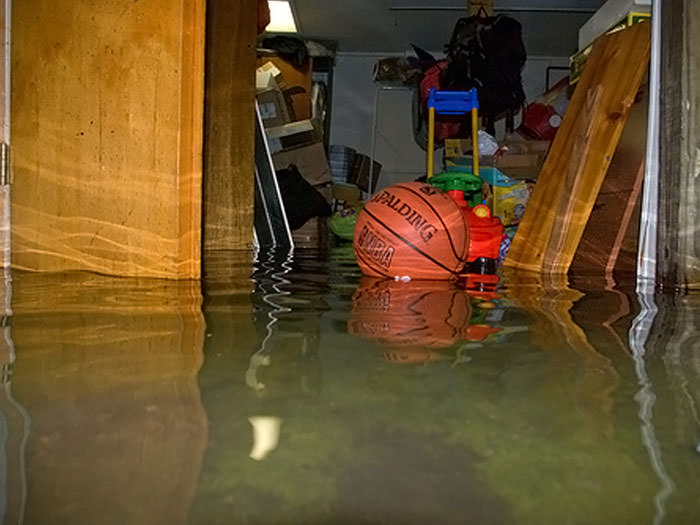Tis the season! They’re happening everywhere.
The National Flood Insurance Program, and yes, it is a program is known as NFIP for short. The NFIP is basically the only place you can buy direct flood insurance.
However, there are some secondary markets that will rate additional flood but generally, they’re still going to force you to get the first portion of your flood policy through the NFIP.
The most important part that you should know is this is not really the same as a homeowner policy so a couple of things you should know about this program, and I emphasize the word program because it’s really not a typical insurance policy
It’s very rigid rules it doesn’t flex or bend to modern needs.
Here’s a little secret…
If you have items in the basement, you likely won’t get paid. I know. It sucks.
But it’s true personal property contents in a basement have almost no coverage. The good news is there’s coverage for a few elements in a basement but basically, if you have a basement finished filled with stuff there’s almost no coverage for that personal property.
Here’s the bad news…
if you have a finished basement there’s almost no coverage for the finishes. This includes carpeting, floor coverings, hardwood floors, painted walls, wallpaper, etc.
Flood Policies are specific on finished basements to where it basically covers unfinished drywall and the utilities that run the house (the electric, the furnace, and things like that).
However, the basement itself if you have a finished basement an NFIP claim you’re going to get probably 10 cents on a dollar for the value of that loss.
YEP! That’s Right. Just $.10 on the dollar.
LIMITS TO YOUR COVERAGE

It’s important to know if you have a basement or not. Because this will determine if you’re owed by the NFIP or by your home insurance.
A basement is really any room that is below grade on all four sides. Easy right? So, if you must get out of the basement by going up it’s a basement.
Even if you have a walkout with a patio door out the back of your basement. Even if it’s a two-inch step up to the grade (to get out of the basement) they’re going to consider that a basement and they’re highly vulnerable to flooding.
This will limit the amount of coverage you have on that level if you’re in a basement according to the way the National Flood Insurance Program describes it.
If you need help understanding if you have a basement or not, you can write the Claims Adjuster of the Year, Ebahi Ejerekhile for help.
Understand this…
This process is incredibly strict. It’s a government program. It is regulated by the government. It’s insanely difficult to beat them going to court.
There’s a 60-day hard proof requirement meaning a proof of loss must be filed within 60 days of the flood. 61 days they may never pay your claim and they’ll close it.
Currently, the NFIP released an extension.
Good news, right?
But, You need to get that proof of us filed within a total of 270 days from the date of their loss to return the Proof of Loss forms to their flood insurance carrier.
You can check the extension here.
HERE’S WHAT YOU NEED TO COLLECT
- all the prior loss documentation you can find if you ever had a flood before
- all the repairs need
- all the contracts
- all the payments you made towards repairs.
TAKE INVENTORY & Track it.
If it was plugged in and got wet, you’ll need to itemize your personal property. Take down the model and serial number for the following:
- your stove
- your central air conditioner
- your furnace
- anything with a power cord
- any high-end contents (if you have contents coverage)
- refrigerators
- Dishwashers
- And basically, everything plugged in that got wet.
They track it very carefully so again without the numbers you may not get paid for your central air system because you need to show the model and serial number.
What happens is somebody’s air conditioner outside gets damaged it’s put on the curb and somebody else brings it over and claims it with the model number.
They track this so they can keep that from happening and keep fraud down to a minimum.
Because the NFIP is not a homeowner policy there aren’t things in the policy like matching to keep you happy and make your life better.
Pre-loss condition is not their goal.
It’s more like we’ll put you back into a house but we’re not really concerned about how nice it was.
THE SCARY TRUTH ABOUT THE NFIP POLICY
It really isn’t a high-end policy and it’s not really meant for that. There’s a $250,000 limit on a residential policy on the building coverage which automatically reduces the amount you could ever receive.
Residential homeowner claims hit $250K regularly.
Contents limits of a hundred thousand are the most you can buy and most of these are ACV meaning they’re paid based on the appreciated value.
There’s no additional living expense.
You might be out of your house from a flood for months with no reimbursement coverage whatsoever from a flood policy. It’s better to have one than not but just so you know, again, this is not a homeowner policy.
I tell people all the time…
… if you pay off your mortgage you want to make sure you maintain your flood insurance because no one’s going to remind you to get it. We locally have some floods here that made national news people have recently paid off their houses and dropped their flood insurance because they had never flooded.
If that’s the case you end up with no coverage whatsoever and these people are getting $75,000 to $100,000 bills to fix the first floor of the home that had just a few inches of water in it.
Tough Right?!
So, you need to understand you need flood insurance.
If you don’t have a mortgage, it’s your responsibility to get flood insurance.
Finally… BE PATIENT! Multiple homes were affected. It’s going to take time to get to you. We don’t sell insurance we just make sure you have the right insurance. Get a FREE consultation over your policy Today. Call 312-883-2064



3 thoughts on “Floods! Understanding NFIP Direct Flood Insurance”
Cheers.
Thanks in favor of sharing such a pleasant thought, paragraph is pleasant, thats why i have read it entirely
Thank you for your support